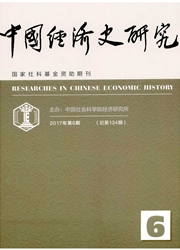

 中文摘要:
中文摘要:
本文通过分析河西走廊讨赖河流域近代水利危机自萌芽、激化到解决的全过程,指出在前现代技术条件下中国干旱区水利开发具有不稳定性与不可持续性,尤其难以形成合理的区域水权制度并保障其执行。不同于一般的水利纷争,流域性水利危机的最终解决有赖于国家的介入;国家介入欲取得成功,必须具备强大政治力量并引入现代水利技术。国家不断寻求着解决危机的最优方式与最佳步骤,其间种种反复曲折体现出水利技术与水权制度之间的复杂互动关系,亦反映出“国家”一词在干旱内流区水利事务中的独特内涵。
 英文摘要:
英文摘要:
Through analyzing all three stages-from being embryonic, intensified to being solved--of the waterpower crisis which blew up in Taotai River Valley in Gansu Corridorduring the first half period of the twentieth century, this article points out that the inland waterpower exploitation in the arid area in China was neither stable nor sustainable. In particular, it was hard to establish a reasonable regional water rights system and to make it work. Hence, being different from regular waterpower disputes, it depends on the State's intervention to solve the crisis of a particular river. What was more, in order to make it successful, the State must possess strong political force and introduce modern technology. The State tried to seek the best ways and steps to solve the crisis and complex interactions between water technology and systemtherefore showed up during this uneven course, which also indicated the unique sense of the word ' state' in water affairs in inland arid area.
 同期刊论文项目
同期刊论文项目
 同项目期刊论文
同项目期刊论文
 Socio-hydrological water balance for water allocation between human and environmental purposes in ca
Socio-hydrological water balance for water allocation between human and environmental purposes in ca Quantitative assessment of climate and human impacts on surface water resources in a typical semi-ar
Quantitative assessment of climate and human impacts on surface water resources in a typical semi-ar Pollutant Flushing Characterizations of Stormwater Runoff and Their Correlation with Land Use in a R
Pollutant Flushing Characterizations of Stormwater Runoff and Their Correlation with Land Use in a R Seasonal water allocation – dealing with hydrologic variability in the context of water rights syste
Seasonal water allocation – dealing with hydrologic variability in the context of water rights syste Seasonal Water Allocation: Dealing with Hydrologic Variability in the Context of a Water Rights Syst
Seasonal Water Allocation: Dealing with Hydrologic Variability in the Context of a Water Rights Syst The contribution of reduction in evaporative cooling to higher surface air temperatures during droug
The contribution of reduction in evaporative cooling to higher surface air temperatures during droug 期刊信息
期刊信息
